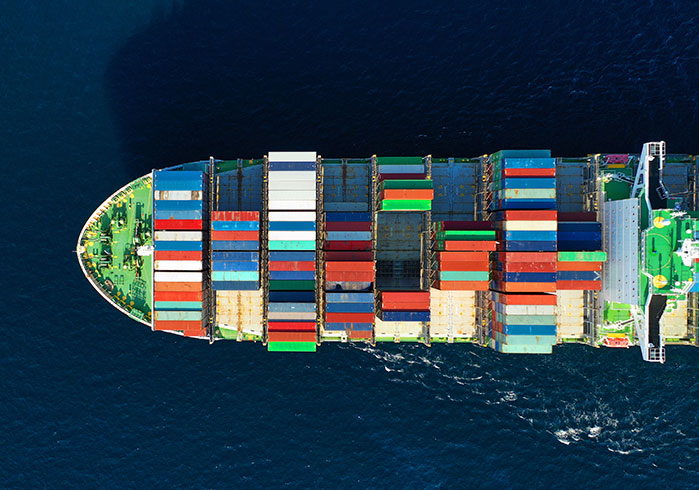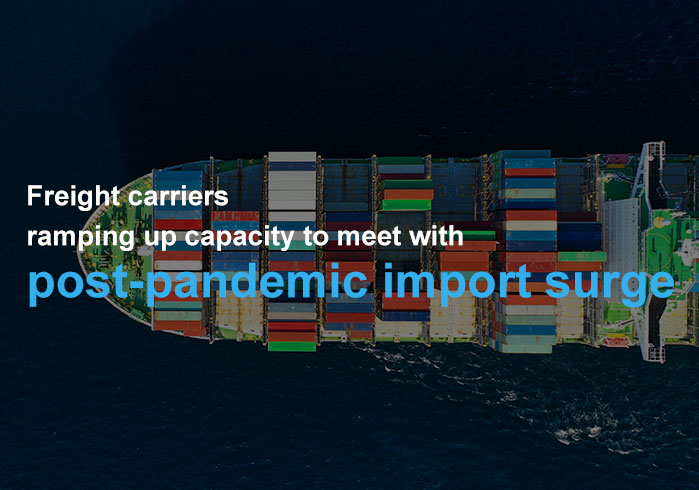
According to information obtained from at least three executives from some of the largest container lines, there is a concerted effort to meet the surprisingly high demand from US shippers. Most ships are actually on the water at the moment. The expectation is that spot rates will continue to be high. There is also an expectation of tight chassis supply combined with high cargo rolls. This trend is likely to persist right up to the end of the fourth quarter. In effect, container shipping is experiencing what many experts refer to as a V-shaped recovery from the effects of the COVID-19 pandemic.
Following the COVID-19 pandemic, many factories were forced to close to avoid cross infections. This had a knock-on effect on other closely aligned businesses and the world economies in general. Within the industry, ocean carriers started to cancel sailings; particularly during the first two quarters of 2020.
Market Dynamics
We are now on the right side of the V-shaped recovery. Demand is much higher than expected since many stores are reopening. Moreover, there are very low retail inventories due to panic buying and a lack of replenishment during the lockdown.
Another important trend has been the shift to e-Commerce as people increasingly avoid any risky situations with regards to the possibility of getting infected. When we look at the shipping industry today, many of the things that impacted the market from May 2020 are still ongoing. That means that the market is very dynamic at the moment.
Fourth-quarter forecasts have reflected this dynamism. For example, there is an expectation that October has been a strong month. We also know that containerized US import volumes from the Asian contingent increased by 91% between March and August.
From a comparative perspective, results show that inbound shipments from Asia only grew by 36% in the same period last year. This year, total US imports during that period have increased by 102%. This is more than twice a comparative period last year in which the increment was 47%.
US retailers are closely watching the inventory-to-sales ratio to ascertain what is happening in the steamship lines. This ratio fell to a seasonally adjusted 1.22 reading as of June 2020. Records show that this is an all-time low. The improvement in July was only 1.23, which barely made a mark in the overall trend.
Industry experts insist that inventory replenishment is the key to market context today. Retailers are looking to stock ahead of the holiday season. In the meantime, US consumers have remained resilient despite the pandemic
.
Container Rates
Because of the unexpectedly high demand, spot rates on the trans-Pacific are twice the rate that they were in the first two quarters of 2020. Due to capacity cuts among the main container lines, rates have also accelerated. For example, China to US West Coast rates were $3,863 per FEU by the 30th of September.
A comparative period last year shows that this year’s increment is 190%. Meanwhile, rates to the East Coast slid $3 to rest at $4,622 per FEU. However, this represents a 97% increment on a comparative period in 2019. According to Uffe Ostergaard of Hapag Lloyd America, the company will attempt to increase capacity in the third quarter to better meet US demand.
There is an expectation that even meeting the demand for the third quarter does not guarantee the same for the fourth quarter. Volumes have ticked up back to where they were in 2019 at this point and in some cases, they are even slightly higher. Hence, many companies are reporting that they will not be able to retain any idle capacity. Alphaliner indicated that the usable capacity on the Asia-North America trade was 523,000 TEU at the beginning of September. This equates to a new record and is 12% higher than it was at the same point the previous year. Most of the demand is coming from the trans-Pacific lines.
Other factors include a shorter sailing time from Asia. Nevertheless, the North-South and trans-Atlantic trades are not yet fully recovered. However, the expectation is that they will do so in due course. Indeed, some anticipate that the US East lines will grow faster than the West Coast trades eventually.
This is a very different sentiment than at the beginning of 2020 when rampant cuts affected rails and trucking firms. Now that demand is rebounding, shippers are likely to pay more for landside moves. Despite some contraction, the fourth quarter still looks very promising for third-party logistics firms, carriers, and even shippers.
Tight Capacity
Capacity remains tight according to many shippers. Regardless of the easing of lockdown measures, the vast majority of consumers are spending on products related to entertainment and working from home. There will also be additional demand for cleaning supplies, personal protective gear, and back-to-school items.
The challenge might be finding the space to ship all these items in a relatively short period. Many carriers are not able to comfortably meet all the demand, in the short run at least. The pandemic had a devastating effect on clothing and department stores. However, they too are experiencing some recovery which is likely to increase demand.
Compounding matters even more is the reality that many retailers were not sure about demand so they left their orders to the last minute. The result is significant delays in delivering these orders given the demand for shipping capacity from Asia to the USA. That is why Gemini is advising shippers to provide an additional lag time of three weeks from what they usually do when ordering.
The market will have to contend with chassis shortages and low trucking availability. The industry has not yet caught up with the reversal of the rapid decline in the shipping industry that happened at the beginning of the year. Despite the strong showing in October, the last two months of 2020 might not be too certain given the indicators of a second COVID-19 wave.
Some anticipate more lockdowns in the USA. Nevertheless, online shopping is likely to keep demand ticking despite the decline of in-store shopping. For example, we know that online sales increased by 44% when compared to 2019. The second quarter of 2020 saw about a 33% increase in online sales when compared to the first quarter. It is also anticipated that warehouse inventory will increase to respond to such upticks in e-Commerce.
Wrapping Up
Whereas the COVID-19 pandemic severely impacted the shipping industry, it is now experiencing a V-shaped recovery. Demand is higher than expected. Many companies that had resigned themselves to terminal decline are now being asked to provide shipping capacity. The demand for online sales and the upcoming holidays will cause maxed out capacity and high spot rates. Experts are advising those that order to do it early and anticipate some delays, particularly if they are getting their goods from Asia.


